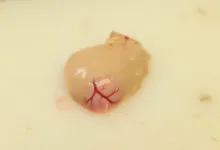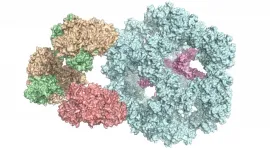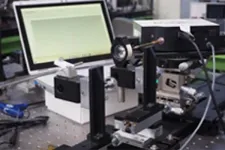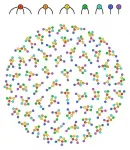Discovering structural diverseness of neurons between brain areas and between cases
2021-02-10
(Press-News.org) It was reported that volume of the brain areas such as superior temporal gyrus and anterior cingulate cortex reduces in schizophrenia but precise change of three-dimensional structure of neuron has remains unclear.
Dr. Itokawa and colleague performed Nanotomography experiments using Fresnel zone plate optics at the BL37XU beamline of the SPring-8 synchrotron radiation facility and at the 32-ID beamline of the Advanced Photon Source (APS) of Argonne National Laboratory.
A total of 34 three-dimensional image datasets of layer V of the BA22 cortex were blinded by coding dataset names and subjected to a computerized procedure to build Cartesian coordinate models of tissue structures. They found that structural differences of neurites and spines between brain areas and between cases. It indicates that 1) neuron structures are dissimilar between the brain areas in every individual and that 2) the dissimilarity itself varies from person to person (Fig. 1).
The brain has a modular architecture in which different areas with different genetic backgrounds exert different functions, e.g. language and sound in BA22 and cognition and emotion in BA24. Besides the genetic mosaicism, environmental factors and education differences between individuals provide different stimuli to different brain areas, possibly resulting in differences in neuron structures between brain areas.
A Brain tissues of Brodmann area 22 (BA22, magenta) of the temporal lobe were stained with Golgi impregnation and subjected to synchrotron radiation nanotomography to visualize three-dimensional tissue structures in layer V. The obtained datasets along with those of the BA24 area (blue) of the anterior cingulate cortex were used for the geometric analysis. The rendering shows a three-dimensional image of the S1A dataset taken from BA22 tissue of the schizophrenia S1 case. The pial surface is toward the top. Voxel values of 160-800 were rendered with the scatter HQ algorithm using VGStudio (Volume Graphics, Germany). Scale bar: 10 μm. B The neuronal
network was reconstructed in Cartesian coordinate space by tracing structures in the image. First, neurites were scanned by calculating the gradient vector flow37 and then traced using a three-dimensional Sobel filter38. The resultant computer-generated model was examined and edited as reported previously9. The obtained model of the S1A dataset was drawn using MCTrace22. Structural constituents are color-coded. The same analysis was repeated for 34 datasets of 4 schizophrenia and 4 control cases. C Three-dimensional cage representation of the observed image (gray) is superposed on the structural model of an apical dendrite (red) indicated with a small dashed box in B. The three-dimensional map is contoured at 3.0 times the standard deviation (3.0 σ) of the voxel values with a grid size of 97.6 nm. Nodes composing the structure are indicated with octagons. D Three-dimensional Cartesian coordinates of the traced structure were used to calculate geometric parameters, including average curvature and average torsion for each neurite. A volume indicated with the lower box in B is magnified and its two representative neurites are highlighted, of which the blue one is tortuous and hence has a high average curvature, while the black one is rather straight and hence has a low average curvature. Arrows indicate corresponding positions in the beeswarm plot that shows the curvature distribution of all neurites in this S1A structure.
Kraepelin placed schizophrenia in a chapter on metabolic disorders in the fifth edition of his Psychiatrie published in 1896. If the relation between carbonyl stress and neurite curvature is observed in future follow-up studies, we can regard the above-mentioned results as the first example suggesting a disease unit of schizophrenia as first predicted by Kraepelin, that is, a disease unit identified with a pathology (high neurite curvature), symptom (negative symptoms), disease course (chronic development), and outcome (treatment resistance).
INFORMATION:
[Attachments] See images for this press release:
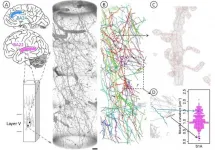
ELSE PRESS RELEASES FROM THIS DATE:
2021-02-10
The recent review, published in Environment International and led by the University of Tartu, summarises the effect of aquatic pollution on cancer prevalence in wild animals with the help of more than 300 reviewed studies. Authors shed light on understudied yet important fields in cancer research in wild animals - summarising the key effects and pointing to future research avenues to crack the puzzle of why cancer develops in polluted environments.
„What was immediately evident was the bias towards fish in current research into aquatic wildlife cancer. However, given this bias it is especially interesting ...
2021-02-10
Sophia Antipolis, 10 February 2021: A nationwide US study has found increasing death rates from heart disease in women under 65. The research is published in European Heart Journal - Quality of Care and Clinical Outcomes, a journal of the European Society of Cardiology (ESC).1 The study found that while death rates from cancer declined every year between 1999 and 2018, after an initial drop, heart disease death rates have been rising since 2010.
"Young women in the US are becoming less healthy, which is now reversing prior improvements in heart disease deaths," said senior author Dr. Erin Michos of Johns Hopkins University School of Medicine, Baltimore, US. "With ...
2021-02-10
Satellite images reveal that the timing of algal blooms in the Red Sea may affect the next haul of sardines and squid by commercial fisheries.
Rising temperatures in the Red Sea have changed the timing of phytoplankton blooms. These microscopic algae form the base of many marine food webs and so are critical to ocean biodiversity and the industries that they support on land, such as fisheries and tourism.
A team led by KAUST climate modeler Ibrahim Hoteit has used satellite images to study the phenology of algal blooms in the northern Red Sea and ...
2021-02-10
A new method has enabled the natural structure of particularly large and complex enzymes to be revealed. Scientists at Martin Luther University Halle-Wittenberg (MLU) and TU Berlin have published their findings in the journal Cell Reports. They investigated a multi-enzyme complex that plays an essential role in metabolism and have discovered that it functions differently than previously thought. This will help scientists better understand certain diseases.
Enzymes are a cell's biocatalysts. They accelerate chemical reactions in the body or ensure that these reactions even take place at all. As a result, they play an extremely important role in metabolism. Individual enzymes frequently form a complex with many subunits, as in the case of the ...
2021-02-10
In a study conducted at the University of Helsinki, Finland, 136 adults adhered to one of three study diets for 12 weeks. One of them corresponded to the average Finnish diet, containing roughly 70% animal-derived protein of total protein, while most of the plant-based protein originated from cereal products. In the second study diet, half of the protein was derived from plant products and the other half from animal products, while the third one contained 30% animal protein and 70% plant-based protein of total protein.
Sources of animal protein, both red and white meat as well as dairy products, were partially replaced with plant-based proteins by adding a diverse range of legumes, nuts, ...
2021-02-10
Your breath holds the key to monitoring fat burning, and now a research group from Tohoku University has created a compact and low-cost device that can measure how our body metabolizes fat.
The device uses an ultraviolet lamp to gauge exhaled acetone gas, which is produced in the blood through the metabolic reaction of fat.
"Precise measurements of acetone gas concentration allows us to determine the body's ability to metabolize fat and develop exercise methods for efficient fat burning," says Professor Yuji Matsuura from Tohoku University's Graduate School of Biomedical ...
2021-02-10
Many natural and human-made networks, such as computer, biological or social networks have a connectivity structure that critically shapes their behavior. The academic field of network science is concerned with analyzing such real-world complex networks and understanding how their structure influences their function or behavior. Examples are the vascular network of our bodies, the network of neurons in our brain, or the network of how an epidemic is spreading through a society.
The need for reliable null models
The analysis of such networks often focuses on finding interesting properties and features. For example, does the structure of a particular contact network help diseases spread ...
2021-02-10
The research team led by Masakazu Ohara, graduate student of the Department of Computer Science and Engineering at Toyohashi University of Technology (student in the Leading Program doctoral program); Associate Professor Kowa Koida of the Electronics-Inspired Interdisciplinary Research Institute; and Associate Professor Juno Kim of the University of New South Wales (Australia) discovered that when people judge the thickness of an object, objects with glass-like transparent optical properties are perceived to be flatter than they actually are. It was previously known that objects made of metallic or glossy materials are perceived to be thicker than what they are, but now the current research has identified that transparent ...
2021-02-10
A description of gravity compatible with the principles of quantum mechanics has long been a widely pursued goal in physics. Existing theories of this 'quantum gravity' often involve mathematical corrections to Heisenberg's Uncertainty Principle (HUP), which quantifies the inherent limits in the accuracy of any quantum measurement. These corrections arise when gravitational interactions are considered, leading to a 'Generalized Uncertainty Principle' (GUP). Two specific GUP models are often used: the first modifies the HUP with a linear correction, while the second introduces a quadratic one. Through new research published in EPJ C, Serena Giardino and Vincenzo ...
2021-02-10
A unique 'heart-shape', with wisps of gas filaments showing an intricate honeycomb-like arrangement, has been discovered at the centre of the iconic supernova remnant, the Crab Nebula. Astronomers have mapped the void in unprecedented detail, creating a realistic three-dimensional reconstruction. The new work is published in Monthly Notices of the Royal Astronomical Society.
The Crab, formally known as Messier 1, exploded as a dramatic supernova in 1054 CE, and was observed over the subsequent months and years by ancient astronomers across the ...
LAST 30 PRESS RELEASES:
[Press-News.org] Discovering structural diverseness of neurons between brain areas and between cases

